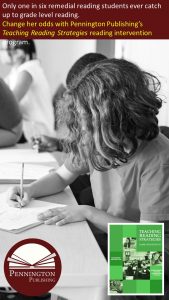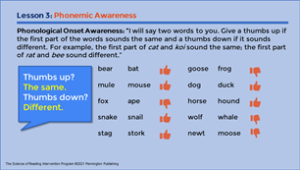Middle School Spelling
In the Whole Language Movement and concurrent National Writing Project popularity of the 1980s and 1990s, spelling was relegated to the editing stage of the writing process. Teachers were instructed to throw away their spelling workbooks and some states, including California, prohibited state funding for the purchase of spelling programs.
I, like other ELA teachers, cheerfully relegated spelling to the dumpster. After all, one less subject to teach! And, to be honest, the only spelling teaching I ever did was to pre-test on Monday, throw out a word search or crossword puzzle of the spelling words, tell students to study the list, and post-test on Friday. Hardly teaching at all.
During that period of time I was earning my masters degree as a reading specialist. The buzzword(s) of our program was balanced literacy. Upon reflection, I have no idea of what opposite ideologies were being placed in proper balance. We had no phonics (decoding) training, nor any spelling (encoding) training.
For my masters thesis I was able to convince my supervisor to approve a qualitative historical analysis, not the usual experimental design. I chose the reading instruction included in the McGuffey Readers. For 85 years, these readers were the primary instructional tool for American teachers. The readers were not just for primary students: intermediate and middle school tweeners also received instruction in this series.
The readers consisted of morally-based character education stories, vocabulary, phonics, spelling, and a few comprehension questions. As I pored over the editions from 1836 up to the 1920s, I found certain pedagogical refinements, but the instructional methodology was remarkably consistent. As a publisher, I understand the “If it ain’t broke, don’t fix it” philosophy; however, consumers have always been suckered by the “New and Improved” marketing strategy, as well. The readers were largely unchanged, in terms of how reading and spelling were taught.
As you might imagine, the juxtaposition of my masters program reading philosophy and that of the McGuffey Readers caused quite a bit of consternation for me. I had just completed six years of middle school teaching and was now at the high school level. Every professional development class that I took and taught ignored the skills of reading and writing and focused solely on the content of literacy. If I mentioned that spelling had been an integral instructional component for most of our country’s history (including the New England Primer and others prior to the McGuffey Readers), it was only in the context of see what outdated forms of instruction those ill-informed educators used to teach.
However, subsequent to the Report of the National Reading Panel: Teaching Children to Read in 2000, I, like so many other ELA teachers who practiced their skills as reading specialists, was confronted with new, consistent reading research findings that have made me backtrack and see the value of teaching the reading skills found in the McGuffey Readers. In reading terms, structural (or word) analysis is essential for above grade level, at grade level, and below grade level readers. Computer detection of eye-movement and the correlation of good readers look at the sound-symbol relationships within words was convincing. In other words, phonics and spelling (two sides of the same coin) matter.
I took a job as a district elementary reading specialist in Elk Grove Unified School District (the third largest district in California) and, along with a cadre of other bright program specialists, we were able to help improve elementary student reading proficiency percentiles from 45 to 72% within only a few years Elk Grove Unified School District. However, the same growth was not achieved by middle and high school students. Middle school reading proficiency continued to under-perform in the mid 40 percentiles. Our brilliant District Reading Coordinator and Associate Superintendent for Elementary knew why this was so, but the Associate Superintendent of Secondary Education refused to move entrenched secondary teachers toward reading skills instruction.
The false dichotomy of elementary teachers teaching students to learn to read and secondary teachers teaching students to read to learn continues to contribute to the widely recognized middle school slump in reading ability. Only one-in-six of below grade level readers by grade 6 ever improve to at grade level reading. “In the simplest terms, these studies ask: Do struggling readers catch up? The data from the studies are clear: Late bloomers are rare; skill deficits are almost always what prevent children from blooming as readers” (American Federation of Teachers, as published by Reading Rockets).
As a reading intervention specialist, the Response to Intervention movement of the last decade has largely focused on early primary reading intervention. Few middle schools have adopted comprehensive reading intervention programs, and even fewer high schools. Interestingly enough, I have found more remedial reading and writing programs at the community college level than at the high school level, here in California.
So what can middle school ELA teachers do? Advocate for your students, especially those one-in-six students, to develop effective Response to Intervention reading programs in your school and district. Take the plunge and differentiate reading instruction within your classroom. Risk the behavior management challenges and multi-level lesson plans for the good of your kids.
However, if the above seems un-do-able for now, or if you’re in the been there and done that phase, what small (yet, significant) step can you take to make a difference for your middle school students? Teach spelling. Not the useless pre-test, word search or crossword puzzle, study, and post-test method I used to employ; not the useless pass out and memorize the list of all “No Excuse” spelling words; not the silly requirement to spell correctly your list of hard SAT, ACT, or Academic Word List vocabulary words, but a comprehensive spelling patterns program for grade-level spelling patterns instruction and remedial spelling patterns instruction. Teaching spelling for a small amount of time per week will give your middle school students the biggest bang for the buck, in terms of reading skills development.
Do your middle school students need spelling instruction? Absolutely? Still unconvinced? I challenge you to administer my FREE comprehensive Diagnostic Spelling Assessment and Recording Matrix. It has 102 words (I did say comprehensive) and covers all common spelling patterns and conventional spelling rules. It only takes 22 minutes and includes an audio file with test administration instructions. Once you see the gaps in your middle school students spelling patterns, you’re going to want to fill those gaps.






